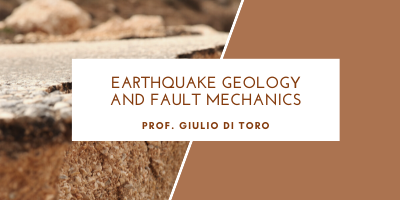Earthquake Geology and Fault Mechanics

Period: First semester
Course unit contents: The course is structured to provide the basic knowledge of geology that can be useful to a geophysicist in order to interpret observations made in the field. Rocks will be taught in relation to the geodynamic environments of formation, to describe the formation of sedimentary rocks, igneous rocks and metamorphic rocks. The course will have a practical character: from observation to interpretation. For this reason, there will be three days of field trips, in which observation will be carried out, geological data will be acquired, and field work will be learnt. The course includes the teaching of geological map reading.
- Plate tectonics and Wilson's cycle.
- The oceanic crust
- Continental crust
- Igneous intrusive rocks: formation and classification
- Magmatism and volcanism of the Apennines
- Volcanoes
- Sedimentary rocks and sedimentary structures
- Ice and glacial deposits: example of the Alpine glaciations
- Geological maps
- Rock deformation
- Orogenic process: formation and evolution of the Apennines and Alps.
Planned learning activities and teaching methods: The course consists in a field trip (1CFU) and frontal lectures (5 CFU).
During the 3-days field trip the students will learn to observe and describe rocks and geological structures, compile a field book, collect geo-structural measurements.
Class activities will be supported by video, imagines, and virtual outcropping.
Geological maps and numerical cartography will be used.